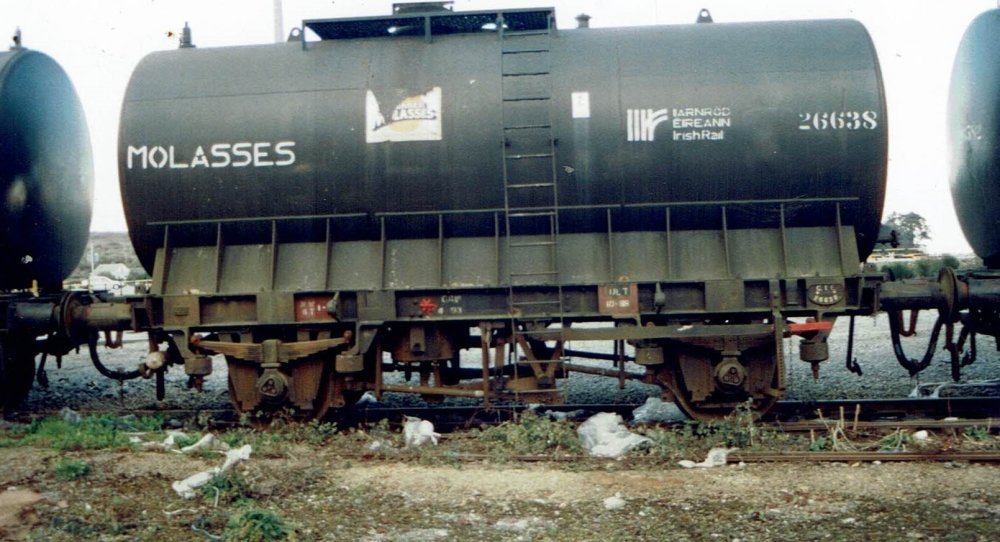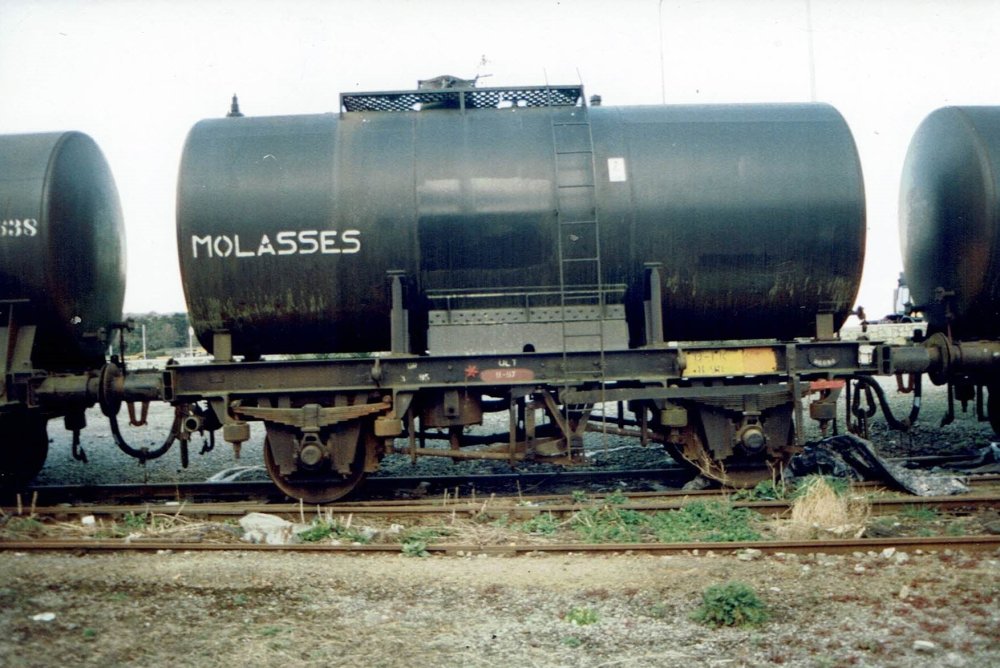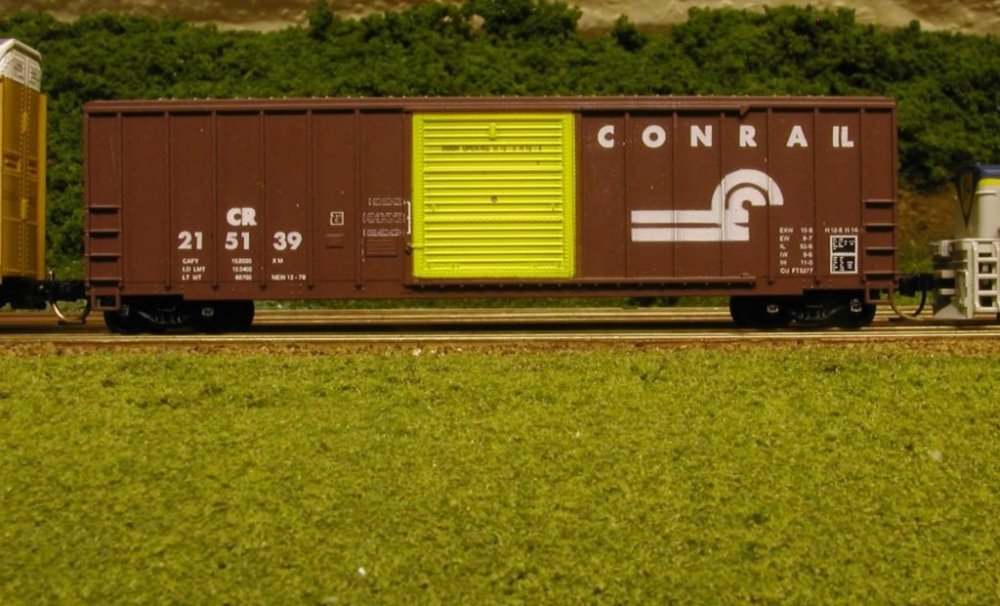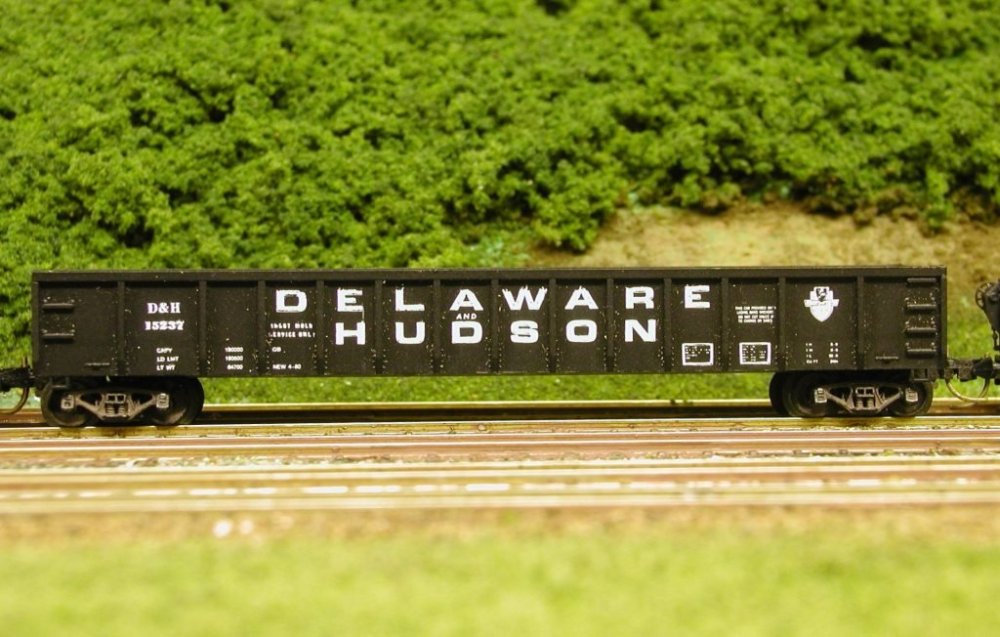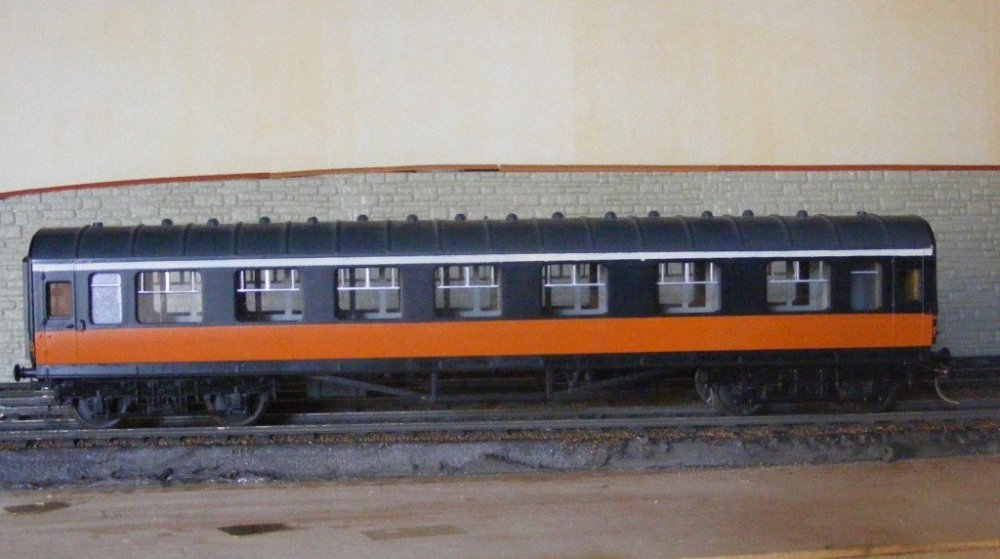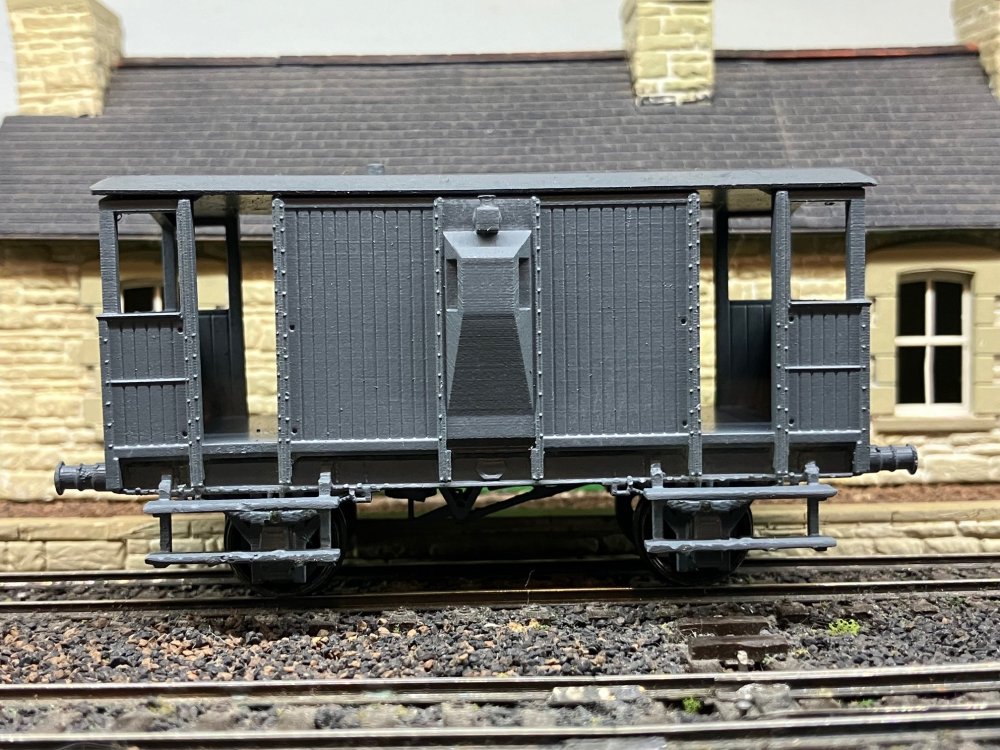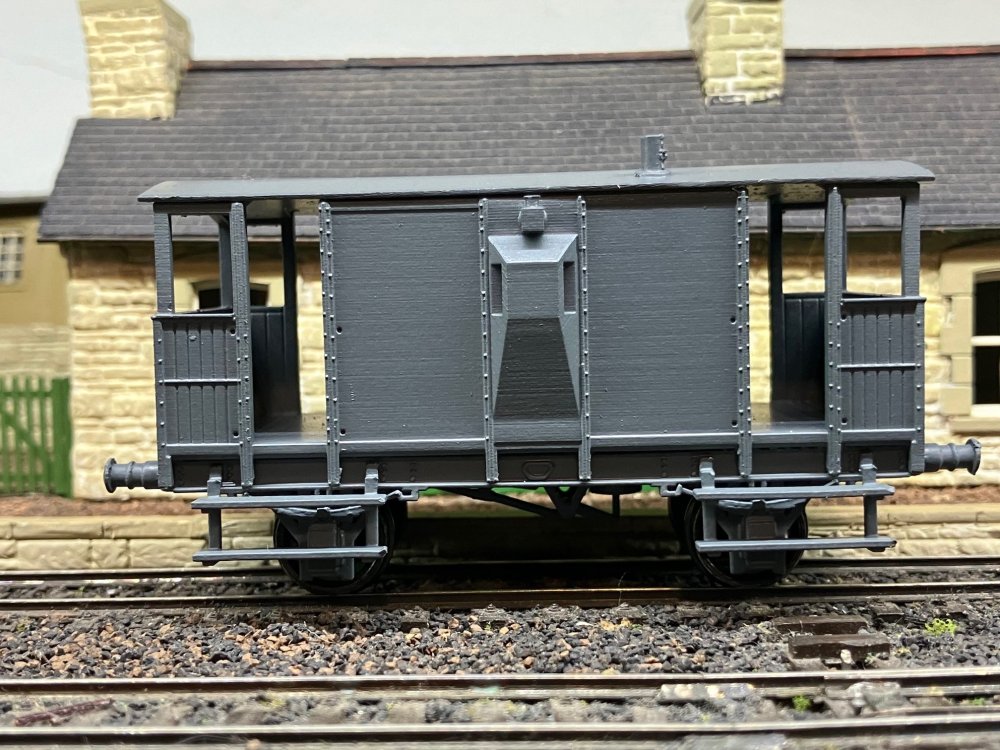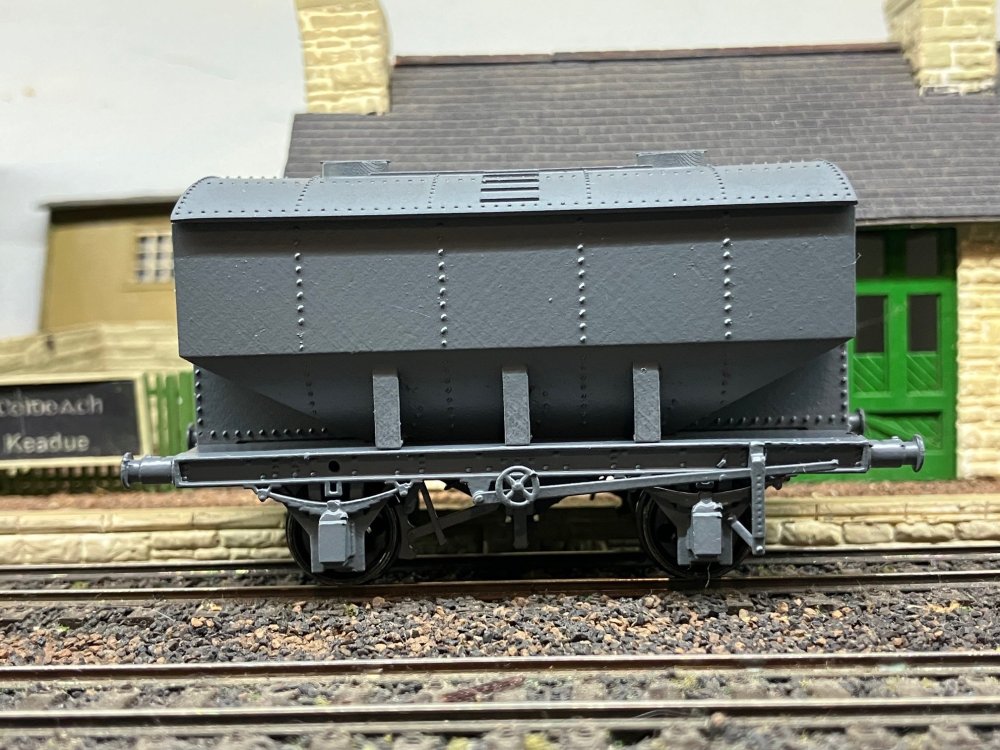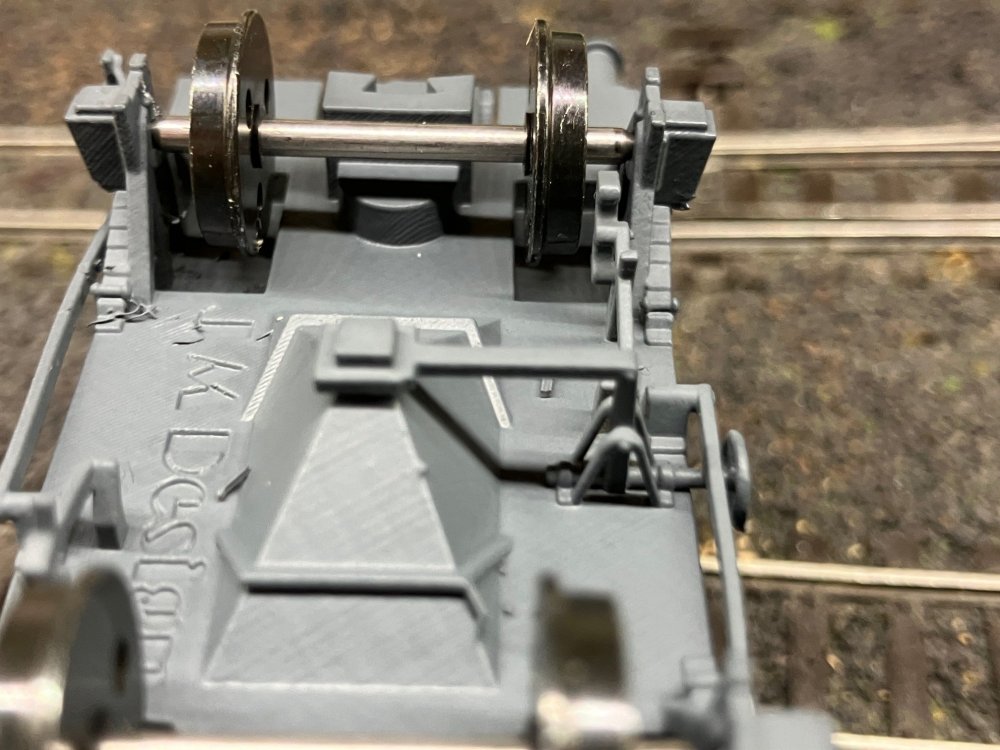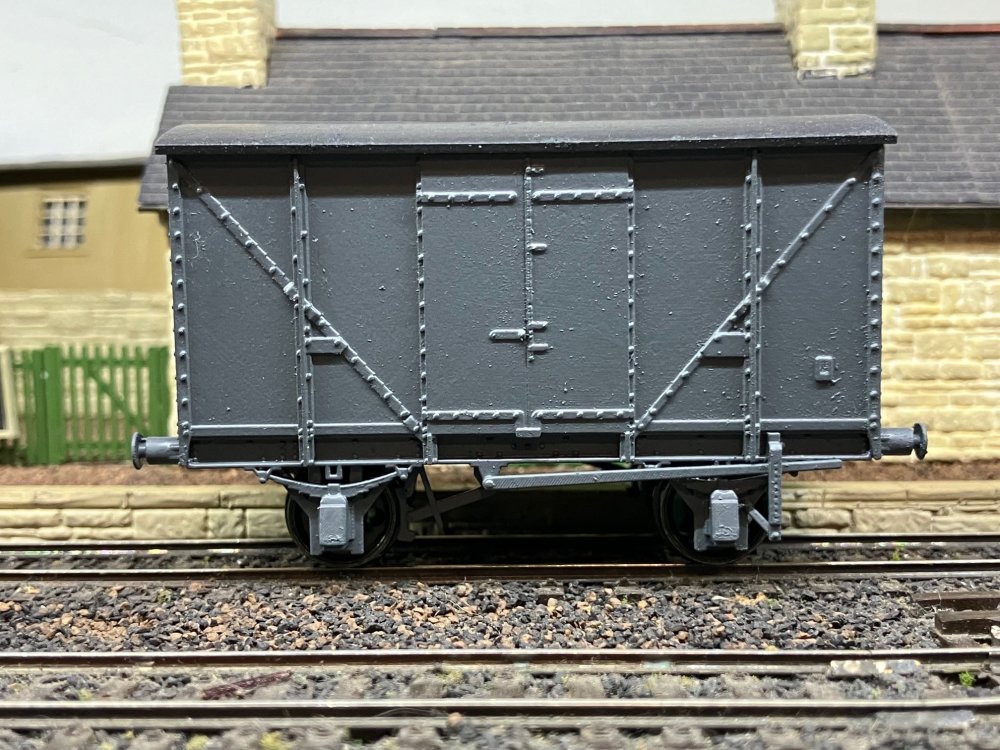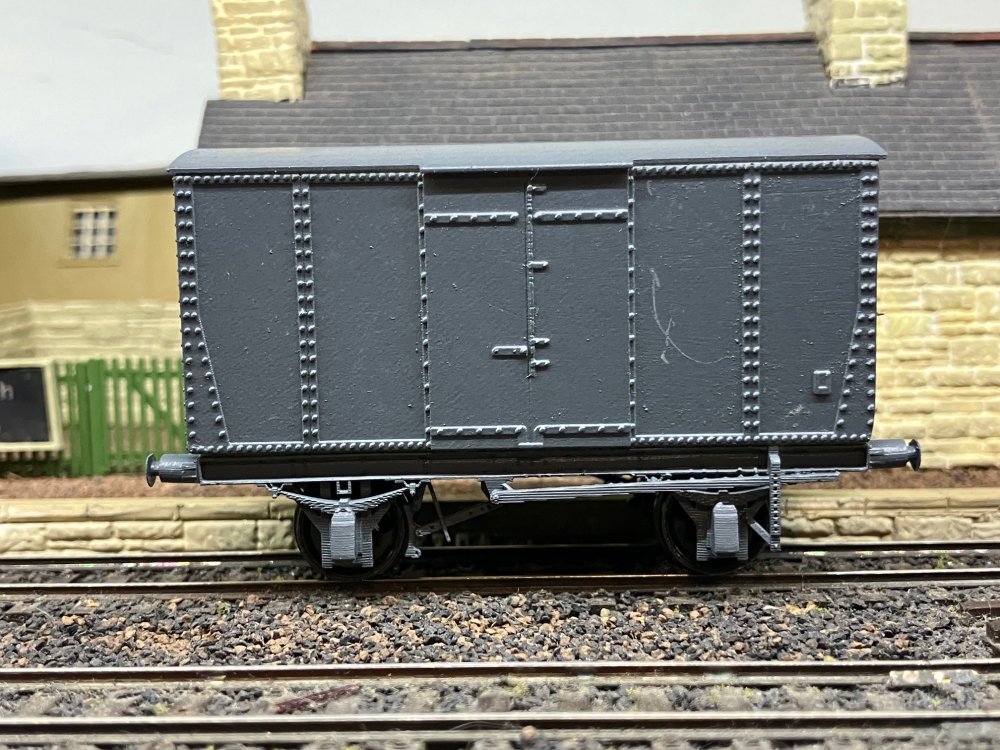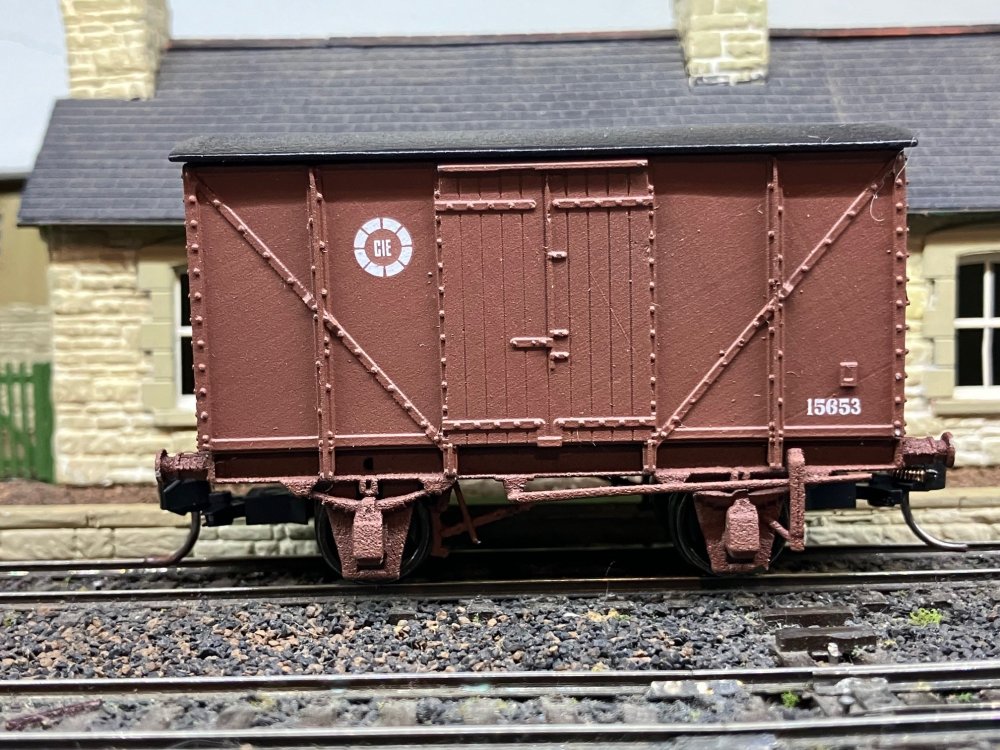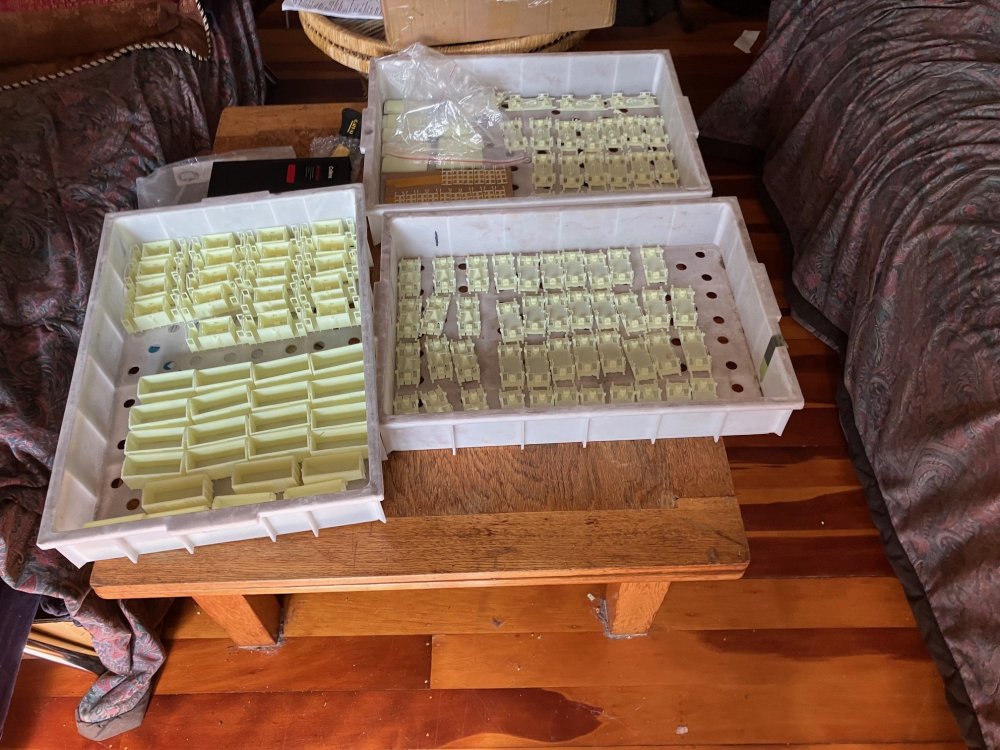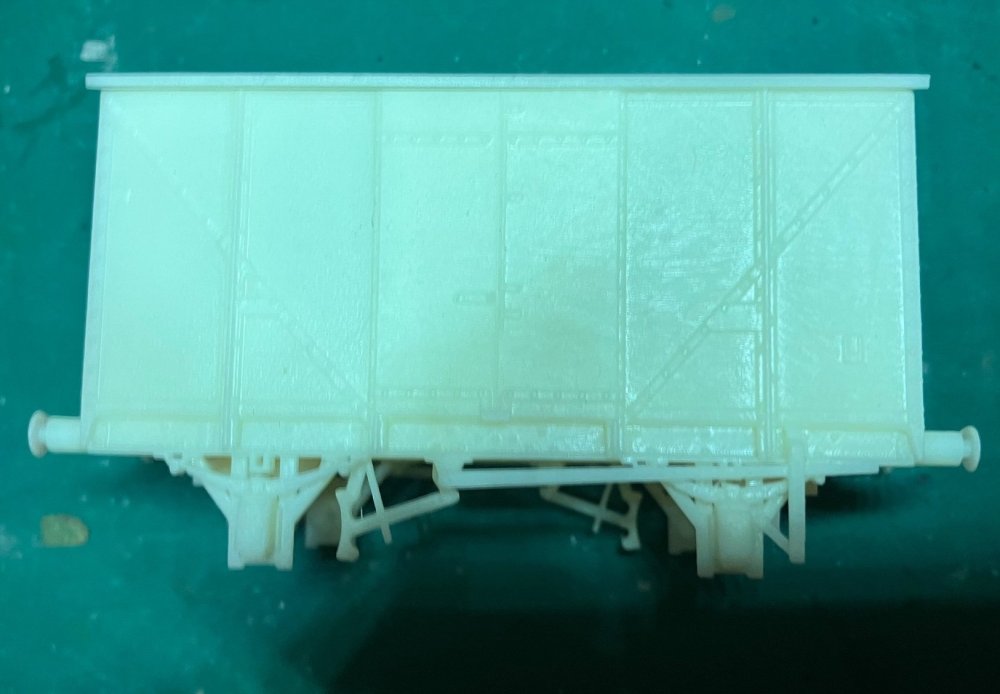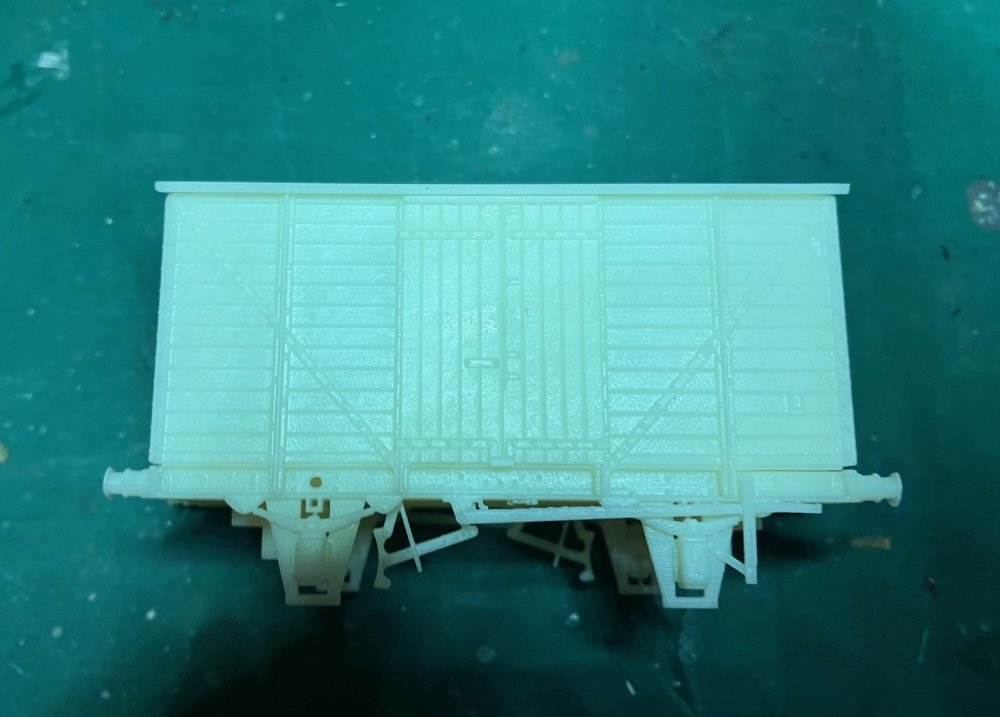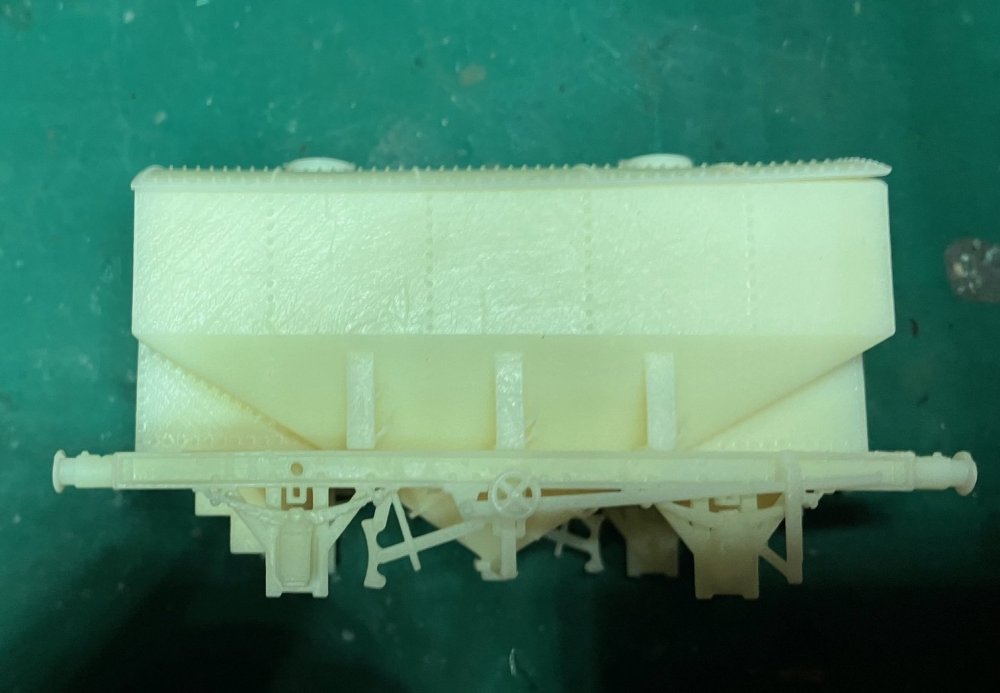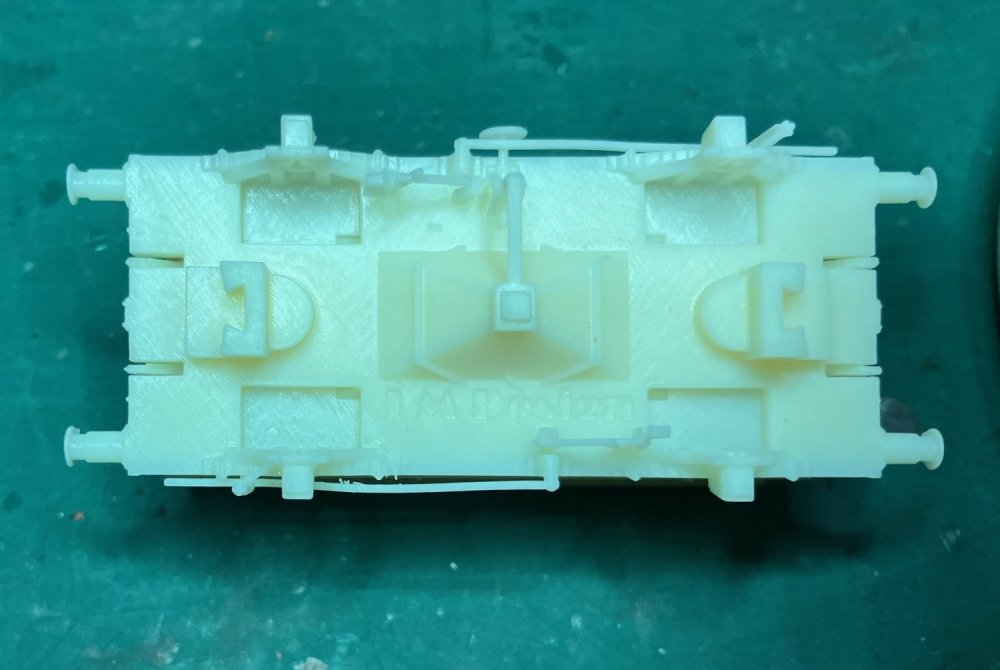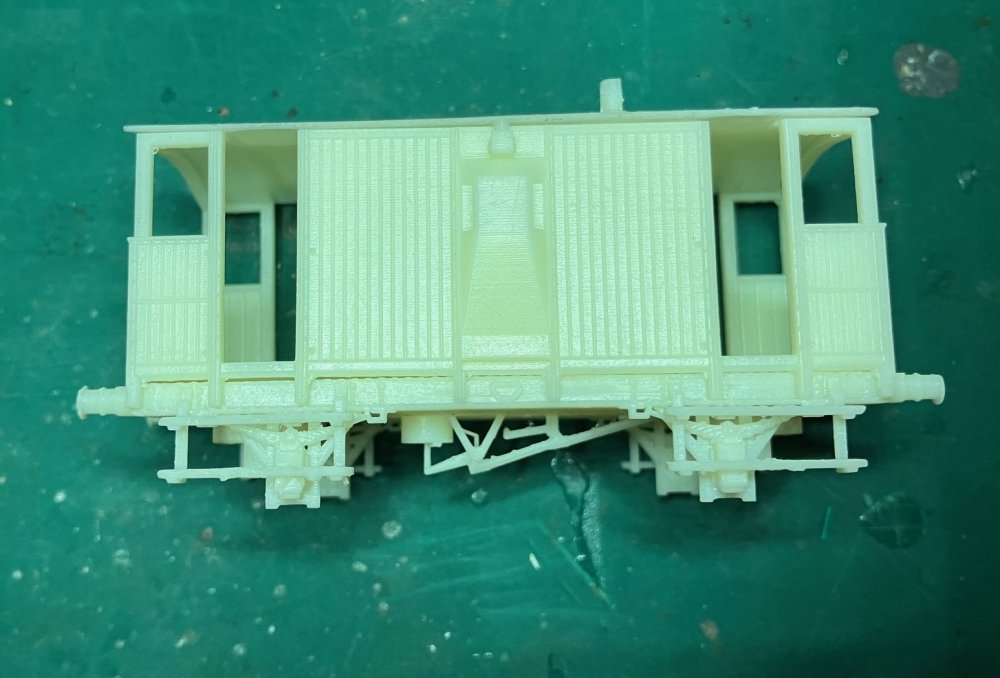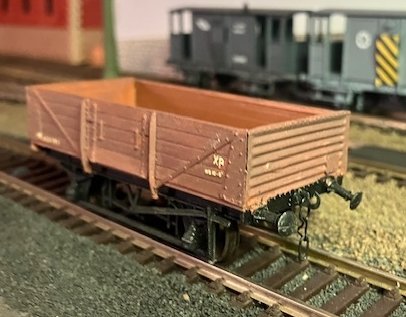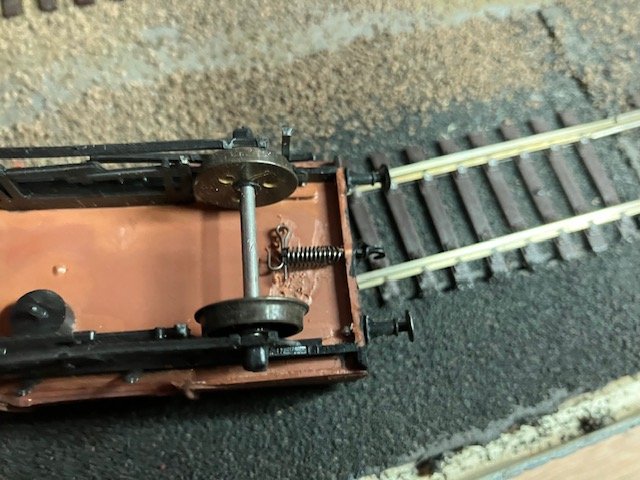-
Posts
4,855 -
Joined
-
Last visited
-
Days Won
119
Content Type
Profiles
Forums
Events
Gallery
Blogs
Store
Community Map
Everything posted by Mayner
-
Don't get dishearted some of us experience set backs in their modelling and like most aspects of like it takes time and practice to build up our modelling skills. Currently I have three incomplete layouts (2 indoors) I haven't had time to work on during the last 6-12 months. In my late teens early 20s I got frustrated trying to build a OO gauge Irish layout in the box bedroom, changed to N and managed to build a reasonably successful layout on my second attempt. Many of us experience setbacks in our modelling so keep plugging on and dont give up! Might be worth trying focus on taking it one step at a time complete one small area of the layout, a building, coach or loco or try Galteemores' approach and build a small diorama for a start
-

Ernies Massive Irish 1930's to 2005 Photo Archive
Mayner replied to Glenderg's topic in Photos & Videos of the Prototype
Several GSWR coaches remained in main line service into the early 70s including a pair of 1915 Dining Cars 2092 & 2093 which hand been retro-fitted with B4 bogies to run with Cravens on Kinsgbridge-Waterford and Limerick fast trains and at least 13 side corridor 64 seat 3rds built between 1915 & 24 which would have been useful coaches from an operating perspective in terms of seating capacity, having toilets and corridor access for the checker! Just wondering if its an Enterprise which at the time was mainly operated by BUT railcars (both CIE & NIR sets) possibly a special Rugby? on account of the loading and mix of coaches, coach coupled next to the heating van seems to be a Bredin Corridor 3rd, next two coaches appear to be Laminates, would have expected Craven's on a named express like the Enterprise by 67. Going back GSR 800s reference to to "Mouldering Branchlines" p.w. maintenance on the Banteer-Newmarket branch does not look too bad by CIE standards during the 50s hopefully Ernie will put up some photos of the Tullow Branch rails just about visible through the grass and shrubbery. Cork North (Kanturk & Macroom) must have been considered a marginal seat in the 54 general election to reinstate the branch goods service. The other G601s were alocated as Tralee and Clara Pilot locos and used to dieselise goods trains on the Castleisland and Banagher branch lines. -

Ernies Massive Irish 1930's to 2005 Photo Archive
Mayner replied to Glenderg's topic in Photos & Videos of the Prototype
Newmarket make a nice model , compact track layout stone buildings, loco shed and wooded settings. Kerry Bogie for motive power or possibly a Sentinel railcar? -
In my expericnce the model railway cult seemed to be a lot more Tribal, Sectarian when I lived in Ireland than in clubs in the English Home Counties. Club members in Dublin struggled to classify me as a member of a particular tribe or sect as I always seemed to be changing loyalties and beliefs, changing from OO British outline (Western Region) to N Scale Irish before turning to Irish 4mm on 21mm gauge God forgive. My English railway friends took it in their stride my running of N Gauge American, side by side with OO and EM British outline and the odd Irish 21mm gauge competition item. I guess I fit into the dissenter/heritic field in model railways as I am always questioning my beliefs/allegiences and doing my own thing, my great grandfathers on both sides were 'proper Protestants" (Scots and English) who held their beliefs despite marrying strong minded girls from old Irish families. Similarly in the preservation world during my time with the Welsh Highland (64 Company) I was simply know as the "Main Man" someone who knew what they were doing and could lead and get things done on the construction and civil engineering side.
-
No one appears to have mentioned the option of converting a Magnesite wagon into a Container Wagon or an Oil Tank Wagon by simply removing the body, relocating the brake cylinders under the chassis, CIE basically used the same "Standard' 20ft Chassis under several types of wagon. At that level of discount worth considering. CIE built 4 Oil Tank Wagons 26628-26631 in 1967 to run with the Magnesite Wagons on Cork (Tivoli)-Ballinacourty Oil-Magnesite trains, the tanks likley to be similar to those used for ESSO & Burmah traffic rather than the anchor mounted tanks used for Irish Cement Oil traffic. CIE built 200 Skeletal Flat Wagons 27101-27300 in 1970 (Burmah tank wagons used same chassis complete with redundant container twist lock spigots!) These wagons seem to have been mainly used for carrying 20' keg & Bitumen/Tar containers. Other possible use for the chassis for 1st Avenues 3D printed Bagged Cement wagons or simply fitting a plasticard floor to represent 25436-25982 CIE's 1st generation of 20T Flat Wagons introduced 1966 Mollasses ex-Burmah Tank wagon. SSM do a conversion kit to update the Dapol ESSO tank with this form of tank mounting and finer ladder/walkway detail. Mollasses ex Irish Cement oil traffic wagon with anchor mounted tank, tank likely to be longer larger dia than Bulleid CIE Fuel Oil tank wagon. Not sure if the Nuns would have tolerated the noise and dust of a sea-water magnesite plant disturbing the peace and tranquility of Clogherhead and its beach, though come to mind the religious orders became deeply involved in property development in the 70s and 80s at the time I worked for a company bought land for housing developments in the Dublin era including in one case building a new modern convent as part of the deal. The Quigleys Magnesite operation became un-economic as a result of increasing fuel prices following the 70s oil crisis, the Ballinacourty plant produced magnesite by processing limestone (railed from a quarry near Bennettsbridge Co-Kilkenny) and sea-water from Dungarvan Bay, then railed the Magnseite to a plant in Tivoli where it was further processed into a heat resistant material used in smelting and metal processing. Interestingly a sea-water magnesite plant was established on the site of the old Boyne Road cement plant in Drogheda after Quigley Magnesite closed, no need for long distance rail transport or Magnesite Wagons limestone was sourced from nearby Irish Cement quarries and finished product exported by sea from Drogheda, saving the nuns in Clogherhead from all that dust nosie and pollution.
-
No shortage of religious cults in this part of the World and a few that preach Prosperity Theology common demonators are leaders (not always charasmatic) with a lust for power, control and sometimes wealth. Not that we ever had anything remotely similar in Ireland https://www.thepress.co.nz/nz-news/350306415/new-zealand-cults-hit-world-stage#:~:text=Many of the other presenters,Jehovah's Witnesses and Destiny Church.
-
Probably start my own fundamentalist sect (cult) on the prosperity theology model. Members chip in 10% of their earnings in the hope of eternal salvation, health and wealth in this world (1st dibs on IRM & MM new releases, all I need is a decent suit, top of the line BMW, a mansion and some slaves to build a decent layout. Wife says that these days I look like an Old Testement Prophet with my long grey hair and beard though my teenage child thinks I look more like a Rock Star though I can't play or sing .
-
JHB Give going teatotal and long distance bus a chance good for the health and avoids the stress of 'modern day rail travel. Been of alcohol for several years (aggravates my gout) has imporved my health and last year enjoyed a 238mile bus ride from Minneapolis to Fargo, I was tempted to drive from Chicago but wife said No! No nonesence with long distance trains in my part of the World except those aimed at foreign tourists and run at a profit Must now join some fundamentalist religious sect.
-
Intrigued to see the Roundhouse brand appearing on the Newsgroup. Quite a historic American brand first producing loco kits before WWII, manufactured after the War by Model Die Castings until acquired in 2004 by Horizon Hobbies to owners of Athearn and production shifted to Far Eastern RTR models. https://www.invaluable.com/roundhouse-ho-scale-model-railroads-trains/sc-GECCMIIG10/#:~:text=Roundhouse model trains started as,in HO scale in 1939. In later years Roundhouse produced some very nice N scale CKD freight cars in addition to more traditional kits like their HO Shay and 2-8-0 steam loco and HO freight and passenger stock. Their freight car kits which featured a 1 piece body on a die-cast chassis were way ahead of contemoprary rtr cars with the exception of Kadee "Micro-trains N scale.
-
The GSR superheated version of the MGWR has been on my to-do list for several years but I am unlikely to have time to draw up artwork for an etch for another year or two. The J5 is another engine that fell by the wayside, I bought a set of wheels, gearbox, motor and boiler fittings to 'scratchbuild' a J5 about 40 years ago but got distracted assembling etched loco kits Irish and British outline. While I could rescale and modify the Z Boiler J15 etch to 2mm, someone would also need to persuade Des to reduce the TMD/SSM J15 etch to 2mm or possibly draw up 2mm J15 artwork from scratch. I am not convinced the original TMD artwork would successfully re-scale from 4mm to 2mm as some of the parts on the TMD/SSM are close to the limits of what can be successfully etched. Going back to HT question to Angus about sponsoring re-scaling the Z Boiler etch to 2mm, Angus sponsored the re-scaling of several of my etches to 2mm including MGWR 2-4-0, Horse Box & Meat Vans and GSWR 52 Class 4-4-0. My main concern is that a model designed in 4mm or 7mm may not successfully re-scale to a smaller scale without carrying out a test build and carrying out the necessary connections. Its challenging enough getting it right first time without a test build in the designed scale.
-
28 x2mm dia pin point axle with a width of 26mm between axleguards is the standard for 21mm mm gauge in 4mm scale I don't know if 28mm pin point axles are available commercially in the UK, some 21mm modellers turn their own axles, others produce a 28mm axle by cutting and sleeving a standard 26mm 00/EM axle with 2mm bore brass tube. Ultrascale https://www.ultrascale.uk/eshop have produced wheel sets on 28mm axles to order with an approx. 6 month wait time. I understand that IRM use OO gauge wheelsets on 28mm axles with their "Bulleid" wagons but the wheel sets do no appear to be available as a spare
-
Thin Lizzy Whisky in the Jar and Horslips Dearg Doom heavily influenced my taste in music in my teenage years before interest shifted to more mainstream UK and American rock groups in the 80s
-
The older type of Hornby 'Stanier' coaches which occasionally appear on the second hand market https://www.ebay.co.uk/itm/285972832947?_nkw=stanier&itmmeta=01J69MYT9SGHM8AT95CCBXYXYW&hash=item42954f22b3:g:Ak4AAOSwaV9mnjWi&amdata=enc%3AAQAJAAAA4Mxmj%2BiGvOveHXEBClPb29jgQ8oOAxj3xa%2FaEsHINxqwuTT%2BgOi8GzoeujHZCOtNKG1NDT1XUU8jFgpswGIy6PRTu8PWjqdE%2BPoWHbWhlq6T73tORpprnUGTkaSfjpttXthGFhRlquomOa07nQlHQWxbhxNA%2BsCe8pSjWhD8eJ%2B1%2Biri1dBmQloe8MwD5%2BHhEFvbUF5k1u9S74%2FLRpRkleNIdlBM2X%2BqzdhVdhsBrGg8ljFxGOsNtCLgalkGWHNAmEp4Y2Zfg1ChpKpIwmhGdvMFTss0X81V0bAVjo%2FYYEqY|tkp%3ABk9SR4Cl-7SyZA are similar in general outline to the GSR Bredin and CIE coaches introduced in the early 1950s. Good for either a simple repaint or more the more extensive sort of alteration carried out by Gibbo. Running can be improved by replacing the original plastic wheels and axle with Hornby metal coach wheels.
-
Brake Van decals arrived on Saturday exactly 1 week after posting in the UK, so production line has started! One of the first steps with the RTR vans in a coat of primer to highlight defects.blemishes before painting. All planked version of Brake Van. Traces of temp supports visible on bottom web of solebar and footsteps, small blemishes on the body may be where temporary supports were removed after printing. The supports are likely to have been generated when the CAD file was 'sliced" (prepared for pinnting) at the factory. Ply bodied version of Brake Van. In typical CIE make do and mend fashion balconies retained their planking on many vans. Photo is taken on the goods side of both the chassis and body (opposite side to temporary supports) which show fewer blemishes. Layered nature of the SLA printing process is more noticable on smooth surfaces than the planked areas. Discharge wheel side of Grain Hopper showing nicely reproduced rivet head detail., again some minor blemishes visible. Reproducing the hopper operating gear was one of my challenges to Ben the 3D modeller designing his second wagon and also to test the limited of 3D printing. Ben now works as an engineer for Rocket Lab who design and launch rockets into space. Again the coat of primer shows the remains of supports and excess resin which typically remains after the post printing clean up process . GSWR/GSR Van blemishes now visible after priming. CIE 1946 version of H Van LMA version of H Van. Very small batch (10) wagons light metal alloy body (LMA) introduced immediately before Bulleid H Van Hybrid version of GSWR/GSR van aluminium sheeted body with planked doors. The prototype wagons actually had a planked body covered by aluminum sheeting. Van was part of a test batch of wagons printed in Singapore as an alternative to NZ. The body SLA printed in a detail resin the chassis printed in nylon using the FDM process as they did not have the capability to print in a resin with ABS properties.
-
Kevin your approach to modelling reminds me more and more of Roye England (an Australian) the founder of Pendon Museum who set out to build models 'of the changing face of rural England" during the 1930s. https://en.wikipedia.org/wiki/Roye_England Pendon Museum well worth visiting physically or virtually! https://pendonmuseum.com/ George Iiffe Stokes and his wife Doris from the same era took a similar approach to modelling and their bohemian lifestyle attracted the younger generation. https://swindonworks.weebly.com/george-iliffe-stokes---scenic-artist.html Well worth checking out!
-
Back in the day when I worked as a health and safety inspector one of our clients was a business owner did not appear to recognise the authority of the New Zealand Government. The business that hired out bouncy castles and inflatable slides had been a constant source of complaints and serious accidents to members of the public for approx. 11 years before the Justice sysem caught up with them with a fine of $450k + victim reparations. The company had been interesting to deal with: On one occasion the owner ran from the police to escape arrest during an interview with an inspector, the businesses vehicles were licensed (tax disc) with a Maaori tribal group that did not recognise the government, ride operators politely refused to comply with instructions/notces from H&S inspectors. During the final Hamilton V8 Supercar event I literally was the 'fun police" and instructed the Event Organiser to deflate a 10m high inflatable slide (in operation without a 1st being certified by an engineer) after the operator refused to shut down the slide. The operator had a large box of cash in a country where the majority of transactions are done electronically. The owner seemes to have been involved in New Zealands anti-Covid Lockdown and Vaccination protests. Whatever about their free-citizen beliefs the one thing that was clear was the fact that they weren't prepared to accept responsibility for the consequences of their actions leaving a trail of badly injured adults and children behind them.
-
The 3D parts required to fulfill our current orders arrived from our supplier in China today. Although I included an allowance for print defects and shipping damage all parts in todays shipment successfully passed receiving inspection. At this stage I expect to begin fulfilling orders during October 2024, Brake Van decals are currently in transit from the UK! Todays delivery included parts for a variety of wagons including Brake Vans, GSR Bulk Grain, GSWR/GSR, CIE 1946 and CIE LMA versions of the H Van Once we have fulfilled current orders a small number of each type of wagon will be available in CKD or kit form. "Receiving Inspection" prints are in a light green SLA resin with ABS properties which has similar resilient characteristics to injection moulded plastic. CIE 1946 Version of the H Van. In the past he tapered ends of the corner angles and buffer shanks had been challenging to print with breakages a problem. GSWR/GSR Van on earlier 9'6" version of the steel chassis with plate axleguards. GSR Grain wagon discharge handwheel side. Underside of Grain Wagon chassis. We modelled the discharge gear to test the capability of 3D printing and were quite impressed with the results. The 3rd iteration of our 1st model the 20T Brake Van introduced in 1950 rebuilt late? 1960s with all metal duckets. Our RTR wagons first receive a coat of grey primer before final clean up and removal of excess resin from the prints.
-
Brassmasters produce etched replacement splashers for the Bachmann 3F & 4F which may be useful in converting a Jinty to 21mm gauge. There are a couple of Jinty detailing articles including one with what looks like Brassmasters splashers and finer detail https://p4newstreet.com/back-to-the-beginning-and-then-a-bit-more-too/ and achieving daylight under boiler https://www.rmweb.co.uk/forums/topic/182307-the-hard-white-underbelly-of-the-jinty/ Starting with a used Hornby body would be a good option to practice on before tackling the Marks Models Jinty body, though on second thoughts probably best to store the Marks UTA Jinty as a mint collectors item and use a standard Hornby or Bachmann as a guinea pig for a 21mm conversion and repaint.
-
The J15 conversion kit evolved significantly since the initial test etch was prepared about 10 years earlier, to include modular firebox and smokebox sub-assemblies and replacement loco and tender brake gear. The rivets were missed in the production batch as a result of a change from my usual drawing methodology and our supplier PPD promptly supplied replacement frets without charge and my customers ending up with a source of spares. Interestingly I noticed that one of the coupling rods was damaged on my superheated J15 a work in progress for the past 10 years and HT has reminded me that I have a set of replacement rods in stock and may actually find time to complete the loco this year.
-
Smiths Couplings available set of 8 from Peters Spares in the UK https://www.petersspares.com/p/smiths-lp1-couplings-eight-etched-brass-3-link-couplings-kit-form possibly a bit fiddly to assemble (fine nose pliers), but fairly popular with modellers that use 3 Links Markits another coupling and parts supplier are currently not taking orders because of medical issues http://www.markits.com/ BR Open Wagon assembled from a Parkside kit with Smiths Instanter couplings, wagon is overdue for repairs! Underside of wagon showing coupling hook and spring, no bracing or obstructions in the way, but it looks like I ground off a moulding for a coupling mount. These type of couplers are easy enough to fit to kit or scratchbuilt wagons, but more challenging to diill a hole/form a slot for the coupling hook and spring in a rtr chassis with a plastic injection moulded underframe. IRM screw or instanter couplings are probably the best option for fitting scale couplings to their wagons https://irishrailwaymodels.com/en-au/collections/couplers?srsltid=AfmBOoot0kRhFMSdFA_pwavabhrZvsU-9yso5SKcJwcLJswmBxiIAwRQ
-
Our family didn't have the income to stock up on toys so no need to worry about the options. Visiting the shops almost weekly drooling over the stock and pestering the staff was the main outlet until I started work and could just about pay for the odd item. . Interestingly my first train sets were battery powered tin-plate circle of track fairly crude approximation of an American steam loco and later a diesel Streamliner all 4 wheelers possibly made in Hong Kong or Japan, possibly from the toy department of a Department Store or Hector Grey's shop on Liffey St the 60s equivalent of a pound store. The Lego train (loco and a circle of track) when it came out was a big step forward, I could assemble and dismantle the loco and set up the track to run point to point and converted the loco from a tank to a tender loco with a set of road wheels with the tyres removed!
-
Growing up in Dublin in the late 60s Triang-Hornby model railways were widely available in shops that sold Bikes, Prams, Radios/TVs and Furniture. Model railways seem to have been stocked in shops in the suburbs not just the city centre, I used to check out the train sets including the Breakdown Set in the window of Lambert's radio shop in Crumlin Village and later the Big-Big Train sets were displayed in O'Neill's furniture store locally known as Mickeys Stores that did a lot of its business on the never-never. The model trains along with prams, bikes and toys would have been distributed through Lines Brothers Irish distributor on Shanowen Road Santry (I forgotten the name of the business!) and it would make sense to distribute the model model trains through the Bike, Pram and Radio shops. "McHugh Himself" bicyle shop under the Loop Line bridge on Talbot Street stocked model railways though I never checked out the shop, I used to regularly visit a Radio Shop on Mary Street that appeared to have a good stock of Triang-Hornby model railways, the assistant was friendly and helpful, but at the time did not have the money to buy anything! Shop closed during the early 70s possibly disappeared into the Jervis Centre. Around the same time a shop on Liffey Street that possibly disappeared into the Arnotts Department store re-development had a basement apparrently devoted to model railways, including a large stock of Merit detail parts including a Scammel 3 wheel truck and trailer. There was a long narrow (bicycle) shop at the corner of Grafton Street and St Stephens Green that stocked model railways including unsold Triang "Block Instruments" that also disappeared in the eraly 70s. My first 'proper' trainset was a Triang-Hornby 'South African Goods' chosen as a Christmas present in "Terrys' Toy Shop" Henry Street when I was 12. nothing South African about it a BR M7 steam loco, 2 opens, 1 van and a Brake which did not appear in the catalogue. Terry's also had a Georges Street store and I checked out both shops on Saturdays and during School holidays almost weekly as a 12-13 year old. I broadened my horizons shopping for the following Christmas to check out Southern Model Railways at their Lr Leeson Street shop and the Model Railway Shop at Monch Place, Phibsboro (on different days!) A Trix 'Trans Pennine DMU" caught my eye at Leeson Street, it looked really attractive but I hadn't a clew about it! I split my business between Leeson Street and Monck Place, buying a Trix E2 0-6-0T and a Triang-Hornby 0-6-0 diesel shunter both second hand unsure from which shop. The diesel shunter was in 'trade in' for the M7, which had being a tinkerer I had dismantle and attempted to re-assemble mucking up the quartering on the driving wheels. Southern Model Railway Co re-located to a very posh up-market store in the Grafton Arcade with beautiful displays or Triang-Hornby, British Trix and possibly continental models and rtr Irish models produced by Harry Connaghton (a professional model maker) and occasional second hand items. From memory Harry's 21mm gauge model of a GNR JT 2-4-2T retailed for approx. £30 at a time the weekly wage averaged.£20. I settled into a routine of visiting Southern Model Railways weekly with a monthly subscriptions for the Modeller and Model Railways with occasional visits to Monck Place until I started working full time at 18. The change in ownership to Marks Models with the departure of the long time manager/assistant Eddy (Elliot?) and the cancellation of regular magazine orders apparrently without notice came as a shock. The move to Hawkins Street and the shift to becoming a Hobby Model Shop as opposed to a specialist Model Railway shop was probably essential for the survival of the business. Model/hobby shops began to appear as such during the 70s John Byrne established/managed a Model Shop at Rathfarmham Shopping Centre with Declan Lonnigan (MRSI comittee member) running the model railway side on Saturday's, Rathfarnham became a family excursion my parents weekly shopping while I visited the model and book shops sometimes followed by a visit to the Orchard Inn. The Rathfranham shop became my introduction to N during the late 70s started by buying 2 wagons before buying a couple of packs of Peco flexible track and a large stock of Farish wagons. John Byrne's Sackville Place Hobby Shop became a major sorce of N gauge stock, along with Nimble Fingers (Stillorgin). Moving to London in the 80s opened a whole load or posibilities including checking out specialist Model Railway shops such as W&H, Kings Cross Models and Victors, exploring the Country and visiting exhibitions which kept me buys for several years. My purchasing became more focused on attending exhibitions and mail order before eventually focusing on designing and producing my own models.
-
I agree with HT finding orders for six sets of Worsley Works parts for an Irish steam loco is a big ask. In my experience overall demand for kits of Irish locos and stock is very low and demand for basic kits/scratchbuilders parts of Irish locos almost non-existant. Sales of the JMD GSWR 52 Class, MGWR Ks/ GSR 650 2-4-0 averaged 12 kits, HT was the only person who was prepared to place an order when I announced the Z Boiler conversion kit for the SSM J15. I can supply the etched parts for the GSWR 52 Class (Quiet Man engine", MGWR Ks, 650 2-4-0, MGWR Meat Van, MGWR Horse Box to order in 4mm and 2mm scales direct from our supplier in the UK. The 52 Class was originally intended to run with the SSM 1804 (J15 tender) however a set of parts for the larger GSWR Type B tender built to run with gthe 52 Class is also available to order. I have also produced an etch for the (slightly) larger 60 Class (D14) 4-4-0, but haven't had time to assemble the loco. I can supply the etches of the 52 Class, 3 versions of the MGWR Ks/650 Class, MGWR Meat Van & Horseboxes to order direct from our supplier in the UK in 4mm and 2mm scales. The 2mm versions were originally commissioned by Angus.
-
E/J26 boiler diameters remained the same. It looks like the Inchacore style smokeboxes and built up chimneys were fitted gradually as locos were overhauled at Inchacore, some locos retained flush riveted smokeboxes and tall MGWR pattern funnels at least into the late 30s. Best advice is use a dated photo if you intend to model a particular loco. The class was re-boilered by the MGWR between 1911 & 1925 (GSR Locos Clements & McMahon) the main visual changes were the replacement of the original Atiock pattern smokebox door & front Vac pipe arrangement and the fitting of Ross Pop safety valves. 556 MGWR 111 Wasp. undated photo. Rebuilt 1923 MGWR pattern smokebox door with handwheel, flush riveted smokebox and Ross Pop safety valves There are photos of 552 & 558 running in this condition in 1939. Aug 1935 photo of 554 at Broadstone with riveted smokebox and built up chimney. 554 Galway 1955 with smokebox handwheel, photos indicate that some locos retained smokebox 'darts' rather handwheels and smokebox handrail arrangement varied between locos.
-
The Studio Scale Models version of the E Class (J26) is probabably the best option for modelling a loco in MGWR-GSR condition and the Alphagraphix version for modelling the J26 in late GSR-CIE condition. The SSM kit is supplied with parts (etched and cast) to assemble the locos in original condition before they were re-built with new boilers after 1911, but curiously includes etched parts to assemble the locos as running on the Waterford & Tramore with enclosed extended bunkers and recessed footsteps. The locos rebuilt after 1911 retained their original chimney and dome, but the smokebox replaced with a less ornate dished version and safety valve covers removed. The Alphagraphix model appears to be the late (post 1940) GSR version with riveted smokebox, 'built up" Inchacore chimney and plain smokebox door. The TMD/SSM kit chassis can be assembled to OO or 21mm gauge in rigid or compensated form. The kits were orignally supplied with a brass chassis etched from the same thickness of material as the body, later kits with an additional nickle silver chassis with beam compensation. I have TMD/SSM MGWR E/J26 kits with both the original brass and later replacement nickle silver chassis both run fine!
.png.c363cdf5c3fb7955cd92a55eb6dbbae0.png)



